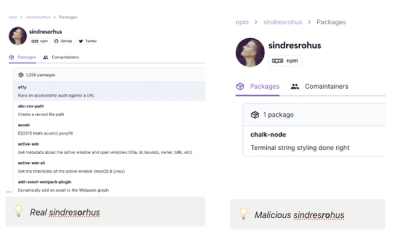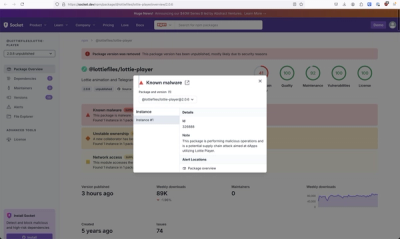TWGL: A Tiny WebGL helper Library
[rhymes with wiggle]

This library's sole purpose is to make using the WebGL API less verbose.
Note: Minor API Changes in 2.x
See Changelist
TL;DR
If you want to get stuff done use three.js. If you want
to do stuff low-level with WebGL consider using TWGL.
The tiniest example
Not including the shaders (which is a simple quad shader) here's the entire code
<canvas id="c"></canvas>
<script src="../dist/4.x/twgl-full.min.js"></script>
<script>
const gl = document.getElementById("c").getContext("webgl");
const programInfo = twgl.createProgramInfo(gl, ["vs", "fs"]);
const arrays = {
position: [-1, -1, 0, 1, -1, 0, -1, 1, 0, -1, 1, 0, 1, -1, 0, 1, 1, 0],
};
const bufferInfo = twgl.createBufferInfoFromArrays(gl, arrays);
function render(time) {
twgl.resizeCanvasToDisplaySize(gl.canvas);
gl.viewport(0, 0, gl.canvas.width, gl.canvas.height);
const uniforms = {
time: time * 0.001,
resolution: [gl.canvas.width, gl.canvas.height],
};
gl.useProgram(programInfo.program);
twgl.setBuffersAndAttributes(gl, programInfo, bufferInfo);
twgl.setUniforms(programInfo, uniforms);
twgl.drawBufferInfo(gl, bufferInfo);
requestAnimationFrame(render);
}
requestAnimationFrame(render);
</script>
And here it is live.
Why? What? How?
WebGL is a very verbose API. Setting up shaders, buffers, attributes and uniforms
takes a lot of code. A simple lit cube in WebGL might easily take over 60 calls into WebGL.
At its core there's really only a few main functions
twgl.createProgramInfo compiles a shader and creates setters for attribs and uniformstwgl.createBufferInfoFromArrays creates buffers and attribute settingstwgl.setBuffersAndAttributes binds buffers and sets attributestwgl.setUniforms sets the uniformstwgl.createTextures creates textures of various sortstwgl.createFramebufferInfo creates a framebuffer and attachments.
There's a few extra helpers and lower-level functions if you need them but those 6 functions are the core of TWGL.
Compare the TWGL vs WebGL code for a point lit cube.
Compiling a Shader and looking up locations
TWGL
const programInfo = twgl.createProgramInfo(gl, ["vs", "fs"]);
WebGL
const program = twgl.createProgramFromScripts(gl, ["vs", "fs"]);
const u_lightWorldPosLoc = gl.getUniformLocation(program, "u_lightWorldPos");
const u_lightColorLoc = gl.getUniformLocation(program, "u_lightColor");
const u_ambientLoc = gl.getUniformLocation(program, "u_ambient");
const u_specularLoc = gl.getUniformLocation(program, "u_specular");
const u_shininessLoc = gl.getUniformLocation(program, "u_shininess");
const u_specularFactorLoc = gl.getUniformLocation(program, "u_specularFactor");
const u_diffuseLoc = gl.getUniformLocation(program, "u_diffuse");
const u_worldLoc = gl.getUniformLocation(program, "u_world");
const u_worldInverseTransposeLoc = gl.getUniformLocation(program, "u_worldInverseTranspose");
const u_worldViewProjectionLoc = gl.getUniformLocation(program, "u_worldViewProjection");
const u_viewInverseLoc = gl.getUniformLocation(program, "u_viewInverse");
const positionLoc = gl.getAttribLocation(program, "a_position");
const normalLoc = gl.getAttribLocation(program, "a_normal");
const texcoordLoc = gl.getAttribLocation(program, "a_texcoord");
Creating Buffers for a Cube
TWGL
const arrays = {
position: [1,1,-1,1,1,1,1,-1,1,1,-1,-1,-1,1,1,-1,1,-1,-1,-1,-1,-1,-1,1,-1,1,1,1,1,1,1,1,-1,-1,1,-1,-1,-1,-1,1,-1,-1,1,-1,1,-1,-1,1,1,1,1,-1,1,1,-1,-1,1,1,-1,1,-1,1,-1,1,1,-1,1,-1,-1,-1,-1,-1],
normal: [1,0,0,1,0,0,1,0,0,1,0,0,-1,0,0,-1,0,0,-1,0,0,-1,0,0,0,1,0,0,1,0,0,1,0,0,1,0,0,-1,0,0,-1,0,0,-1,0,0,-1,0,0,0,1,0,0,1,0,0,1,0,0,1,0,0,-1,0,0,-1,0,0,-1,0,0,-1],
texcoord: [1,0,0,0,0,1,1,1,1,0,0,0,0,1,1,1,1,0,0,0,0,1,1,1,1,0,0,0,0,1,1,1,1,0,0,0,0,1,1,1,1,0,0,0,0,1,1,1],
indices: [0,1,2,0,2,3,4,5,6,4,6,7,8,9,10,8,10,11,12,13,14,12,14,15,16,17,18,16,18,19,20,21,22,20,22,23],
};
const bufferInfo = twgl.createBufferInfoFromArrays(gl, arrays);
WebGL
const positions = [1,1,-1,1,1,1,1,-1,1,1,-1,-1,-1,1,1,-1,1,-1,-1,-1,-1,-1,-1,1,-1,1,1,1,1,1,1,1,-1,-1,1,-1,-1,-1,-1,1,-1,-1,1,-1,1,-1,-1,1,1,1,1,-1,1,1,-1,-1,1,1,-1,1,-1,1,-1,1,1,-1,1,-1,-1,-1,-1,-1];
const normals = [1,0,0,1,0,0,1,0,0,1,0,0,-1,0,0,-1,0,0,-1,0,0,-1,0,0,0,1,0,0,1,0,0,1,0,0,1,0,0,-1,0,0,-1,0,0,-1,0,0,-1,0,0,0,1,0,0,1,0,0,1,0,0,1,0,0,-1,0,0,-1,0,0,-1,0,0,-1];
const texcoords = [1,0,0,0,0,1,1,1,1,0,0,0,0,1,1,1,1,0,0,0,0,1,1,1,1,0,0,0,0,1,1,1,1,0,0,0,0,1,1,1,1,0,0,0,0,1,1,1];
const indices = [0,1,2,0,2,3,4,5,6,4,6,7,8,9,10,8,10,11,12,13,14,12,14,15,16,17,18,16,18,19,20,21,22,20,22,23];
const positionBuffer = gl.createBuffer();
gl.bindBuffer(gl.ARRAY_BUFFER, positionBuffer);
gl.bufferData(gl.ARRAY_BUFFER, new Float32Array(positions), gl.STATIC_DRAW);
const normalBuffer = gl.createBuffer();
gl.bindBuffer(gl.ARRAY_BUFFER, normalBuffer);
gl.bufferData(gl.ARRAY_BUFFER, new Float32Array(normals), gl.STATIC_DRAW);
const texcoordBuffer = gl.createBuffer();
gl.bindBuffer(gl.ARRAY_BUFFER, texcoordBuffer);
gl.bufferData(gl.ARRAY_BUFFER, new Float32Array(texcoords), gl.STATIC_DRAW);
const indicesBuffer = gl.createBuffer();
gl.bindBuffer(gl.ELEMENT_ARRAY_BUFFER, indicesBuffer);
gl.bufferData(gl.ELEMENT_ARRAY_BUFFER, new Uint16Array(indices), gl.STATIC_DRAW);
Setting Attributes and Indices for a Cube
TWGL
twgl.setBuffersAndAttributes(gl, programInfo, bufferInfo);
WebGL
gl.bindBuffer(gl.ARRAY_BUFFER, positionBuffer);
gl.vertexAttribPointer(positionLoc, 3, gl.FLOAT, false, 0, 0);
gl.enableVertexAttribArray(positionLoc);
gl.bindBuffer(gl.ARRAY_BUFFER, normalBuffer);
gl.vertexAttribPointer(normalLoc, 3, gl.FLOAT, false, 0, 0);
gl.enableVertexAttribArray(normalLoc);
gl.bindBuffer(gl.ARRAY_BUFFER, texcoordBuffer);
gl.vertexAttribPointer(texcoordLoc, 2, gl.FLOAT, false, 0, 0);
gl.enableVertexAttribArray(texcoordLoc);
gl.bindBuffer(gl.ELEMENT_ARRAY_BUFFER, indicesBuffer);
Setting Uniforms for a Lit Cube
TWGL
const uniforms = {
u_lightWorldPos: [1, 8, -10],
u_lightColor: [1, 0.8, 0.8, 1],
u_ambient: [0, 0, 0, 1],
u_specular: [1, 1, 1, 1],
u_shininess: 50,
u_specularFactor: 1,
u_diffuse: tex,
};
uniforms.u_viewInverse = camera;
uniforms.u_world = world;
uniforms.u_worldInverseTranspose = m4.transpose(m4.inverse(world));
uniforms.u_worldViewProjection = m4.multiply(viewProjection, world);
twgl.setUniforms(programInfo, uniforms);
WebGL
const u_lightWorldPos = [1, 8, -10];
const u_lightColor = [1, 0.8, 0.8, 1];
const u_ambient = [0, 0, 0, 1];
const u_specular = [1, 1, 1, 1];
const u_shininess = 50;
const u_specularFactor = 1;
const u_diffuse = 0;
gl.uniform3fv(u_lightWorldPosLoc, u_lightWorldPos);
gl.uniform4fv(u_lightColorLoc, u_lightColor);
gl.uniform4fv(u_ambientLoc, u_ambient);
gl.uniform4fv(u_specularLoc, u_specular);
gl.uniform1f(u_shininessLoc, u_shininess);
gl.uniform1f(u_specularFactorLoc, u_specularFactor);
gl.uniform1i(u_diffuseLoc, u_diffuse);
gl.uniformMatrix4fv(u_viewInverseLoc, false, camera);
gl.uniformMatrix4fv(u_worldLoc, false, world);
gl.uniformMatrix4fv(u_worldInverseTransposeLoc, false, m4.transpose(m4.inverse(world)));
gl.uniformMatrix4fv(u_worldViewProjectionLoc, false, m4.multiply(viewProjection, world));
Loading / Setting up textures
TWGL
const textures = twgl.createTextures(gl, {
hftIcon: { src: "images/hft-icon-16.png", mag: gl.NEAREST },
clover: { src: "images/clover.jpg" },
fromCanvas: { src: ctx.canvas },
yokohama: {
target: gl.TEXTURE_CUBE_MAP,
src: [
'images/yokohama/posx.jpg',
'images/yokohama/negx.jpg',
'images/yokohama/posy.jpg',
'images/yokohama/negy.jpg',
'images/yokohama/posz.jpg',
'images/yokohama/negz.jpg',
],
},
goldengate: {
target: gl.TEXTURE_CUBE_MAP,
src: 'images/goldengate.jpg',
},
checker: {
mag: gl.NEAREST,
min: gl.LINEAR,
src: [
255,255,255,255,
192,192,192,255,
192,192,192,255,
255,255,255,255,
],
},
stripe: {
mag: gl.NEAREST,
min: gl.LINEAR,
format: gl.LUMINANCE,
src: new Uint8Array([
255,
128,
255,
128,
255,
128,
255,
128,
]),
width: 1,
},
});
WebGL
const hftIconTex = gl.createTexture();
gl.bindTexture(gl.TEXTURE_2D, tex);
gl.texImage2D(gl.TEXTURE_2D, 0, gl.RGBA, gl.RGBA, gl.UNSIGNED_BYTE, hftIconImg);
gl.generateMipmaps(gl.TEXTURE_2D);
gl.texParameteri(gl.TEXTURE_2D, gl.TEXTURE_MAG_FILTER, gl.NEAREST);
const cloverTex = gl.createTexture();
gl.bindTexture(gl.TEXTURE_2D, tex);
gl.texImage2D(gl.TEXTURE_2D, 0, gl.RGBA, gl.RGBA, gl.UNSIGNED_BYTE, hftIconImg);
gl.texParameteri(gl.TEXTURE_2D, gl.TEXTURE_MIN_FILTER, gl.LINEAR);
gl.texParameteri(gl.TEXTURE_2D, gl.TEXTURE_WRAP_S, gl.CLAMP_TO_EDGE);
gl.texParameteri(gl.TEXTURE_2D, gl.TEXTURE_WRAP_T, gl.CLAMP_TO_EDGE);
const cloverTex = gl.createTexture();
gl.bindTexture(gl.TEXTURE_2D, tex);
gl.texImage2D(gl.TEXTURE_2D, 0, gl.RGBA, gl.RGBA, gl.UNSIGNED_BYTE, ctx.canvas);
gl.generateMipmaps(gl.TEXTURE_2D);
const yokohamaTex = gl.createTexture();
gl.bindTexture(gl.TEXTURE_CUBE_MAP, tex);
gl.texImage2D(gl.TEXTURE_CUBE_MAP_POSITIVE_X, 0, gl.RGBA, gl.RGBA, gl.UNSIGNED_BYTE, posXImg);
gl.texImage2D(gl.TEXTURE_CUBE_MAP_NEGATIVE_X, 0, gl.RGBA, gl.RGBA, gl.UNSIGNED_BYTE, negXImg);
gl.texImage2D(gl.TEXTURE_CUBE_MAP_POSITIVE_Y, 0, gl.RGBA, gl.RGBA, gl.UNSIGNED_BYTE, posYImg);
gl.texImage2D(gl.TEXTURE_CUBE_MAP_NEGATIVE_Y, 0, gl.RGBA, gl.RGBA, gl.UNSIGNED_BYTE, negYImg);
gl.texImage2D(gl.TEXTURE_CUBE_MAP_POSITIVE_Z, 0, gl.RGBA, gl.RGBA, gl.UNSIGNED_BYTE, posZImg);
gl.texImage2D(gl.TEXTURE_CUBE_MAP_NEGATIVE_Z, 0, gl.RGBA, gl.RGBA, gl.UNSIGNED_BYTE, negZImg);
gl.generateMipmaps(gl.TEXTURE_CUBE_MAP);
const goldengateTex = gl.createTexture();
gl.bindTexture(gl.TEXTURE_CUBE_MAP, tex);
const size = goldengate.width / 3;
const slices = [0, 0, 1, 0, 2, 0, 0, 1, 1, 1, 2, 1];
const tempCtx = document.createElement("canvas").getContext("2d");
tempCtx.canvas.width = size;
tempCtx.canvas.height = size;
for (let ii = 0; ii < 6; ++ii) {
const xOffset = slices[ii * 2 + 0] * size;
const yOffset = slices[ii * 2 + 1] * size;
tempCtx.drawImage(element, xOffset, yOffset, size, size, 0, 0, size, size);
gl.texImage2D(faces[ii], 0, format, format, type, tempCtx.canvas);
}
gl.generateMipmaps(gl.TEXTURE_CUBE_MAP);
const checkerTex = gl.createTexture();
gl.bindTexture(gl.TEXTURE_2D, tex);
gl.texImage2D(gl.TEXTURE_2D, 0, gl.RGBA, gl.RGBA, gl.UNSIGNED_BYTE, new Uint8Array([
255,255,255,255,
192,192,192,255,
192,192,192,255,
255,255,255,255,
]));
gl.generateMipmaps(gl.TEXTURE_2D);
gl.texParameteri(gl.TEXTURE_2D, gl.TEXTURE_MAG_FILTER, gl.NEAREST);
gl.texParameteri(gl.TEXTURE_2D, gl.TEXTURE_MIN_FILTER, gl.LINEAR);
const stripeTex = gl.createTexture();
gl.bindTexture(gl.TEXTURE_2D, tex);
gl.pixelStorei(gl.UNPACK_ALIGNMENT, 1);
gl.texImage2D(gl.TEXTURE_2D, 0, gl.LUMINANCE, gl.LUMINANCE, gl.UNSIGNED_BYTE, new Uint8Array([
255,
128,
255,
128,
255,
128,
255,
128,
]));
gl.generateMipmaps(gl.TEXTURE_2D);
gl.texParameteri(gl.TEXTURE_2D, gl.TEXTURE_MAG_FILTER, gl.NEAREST);
gl.texParameteri(gl.TEXTURE_2D, gl.TEXTURE_MIN_FILTER, gl.LINEAR);
Creating Framebuffers and attachments
TWGL
const attachments = [
{ format: RGBA, type: UNSIGNED_BYTE, min: LINEAR, wrap: CLAMP_TO_EDGE },
{ format: DEPTH_STENCIL, },
];
const fbi = twgl.createFramebufferInfo(gl, attachments);
WebGL
const fb = gl.createFramebuffer(gl.FRAMEBUFFER);
gl.bindFramebuffer(gl.FRAMEBUFFER, fb);
const tex = gl.createTexture();
gl.bindTexture(gl.TEXTURE_2D, tex);
gl.texImage2D(gl.TEXTURE_2D, 0, gl.RGBA, gl.drawingBufferWidth, gl.drawingBufferHeight, 0, gl.RGBA, gl.UNSIGNED_BYTE, null);
gl.texParameteri(gl.TEXTURE_2D, gl.TEXTURE_WRAP_S, gl.CLAMP_TO_EDGE);
gl.texParameteri(gl.TEXTURE_2D, gl.TEXTURE_WRAP_T, gl.CLAMP_TO_EDGE);
gl.texParameteri(gl.TEXTURE_2D, gl.TEXTURE_MIN_FILTER, gl.LINEAR);
gl.framebufferTexture2D(gl.FRAMEBUFFER, gl.COLOR_ATTACHMENT0, gl.TEXTURE_2D, tex, 0);
const rb = gl.createRenderbuffer();
gl.bindRenderbuffer(gl.RENDERBUFFER, rb);
gl.renderbufferStorage(gl.RENDERBUFFER, gl.DEPTH_STENCIL, gl.drawingBufferWidth, gl.drawingBufferHeight);
gl.framebufferRenderbuffer(gl.FRAMEBUFFER, gl.DEPTH_STENCIL_ATTACHMENT, gl.RENDERBUFFER, rb);
Compare
TWGL example vs WebGL example
Examples
WebGL 2 Examples
OffscreenCanvas Example
ES6 module support
AMD support
CommonJS / Browserify support
Other Features
-
Includes some optional 3d math functions (full version)
You are welcome to use any math library as long as it stores matrices as flat Float32Array
or JavaScript arrays.
-
Includes some optional primitive generators (full version)
planes, cubes, spheres, ... Just to help get started
Usage
See the examples. Otherwise there's a few different versions
twgl-full.module.js the es6 module versiontwgl-full.min.js the minified full versiontwgl-full.js the concatenated full versiontwgl.min.js the minimum version (no 3d math, no primitives)twgl.js the concatenated minimum version (no 3d math, no primitives)
Download
Rationale and other chit-chat
TWGL's is an attempt to make WebGL simpler by providing a few tiny helper functions
that make it much less verbose and remove the tedium. TWGL is NOT trying to help
with the complexity of managing shaders and writing GLSL. Nor is it a 3D library like
three.js. It's just trying to make WebGL less verbose.
TWGL can be considered a spiritual successor to TDL. Where
as TDL created several classes that wrapped WebGL, TWGL tries not to wrap anything. In fact
you can manually create nearly all TWGL data structures.
For example the function setAttributes takes an object of attributes.
In WebGL you might write code like this
gl.bindBuffer(gl.ARRAY_BUFFER, positionBuffer);
gl.vertexAttribPointer(positionLoc, 3, gl.FLOAT, false, 0, 0);
gl.enableVertexAttribArray(positionLoc);
gl.bindBuffer(gl.ARRAY_BUFFER, normalBuffer);
gl.vertexAttribPointer(normalLoc, 3, gl.FLOAT, false, 0, 0);
gl.enableVertexAttribArray(normalLoc);
gl.bindBuffer(gl.ARRAY_BUFFER, texcoordBuffer);
gl.vertexAttribPointer(texcoordLoc, 2, gl.FLOAT, false, 0, 0);
gl.enableVertexAttribArray(texcoordLoc);
gl.bindBuffer(gl.ARRAY_BUFFER, colorsBuffer);
gl.vertexAttribPointer(colorLoc, 4, gl.UNSIGNED_BYTE, true, 0, 0);
gl.enableVertexAttribArray(colorLoc);
setAttributes is just the simplest code to do that for you.
const attribs = {
a_position: { buffer: positionBuffer, size: 3, },
a_normal: { buffer: normalBuffer, size: 3, },
a_texcoord: { buffer: texcoordBuffer, size: 2, },
a_color: { buffer: colorBuffer, size: 4, type: gl.UNSIGNED_BYTE, normalize: true, },
};
twgl.setAttributes(attribSetters, attribs);
The point of the example above is TWGL is a thin wrapper. All it's doing is trying
to make common WebGL operations easier and less verbose. Feel free to mix it with raw WebGL.
API Docs
API Docs are here.
Want to learn WebGL?
Try webglfundamentals.org



